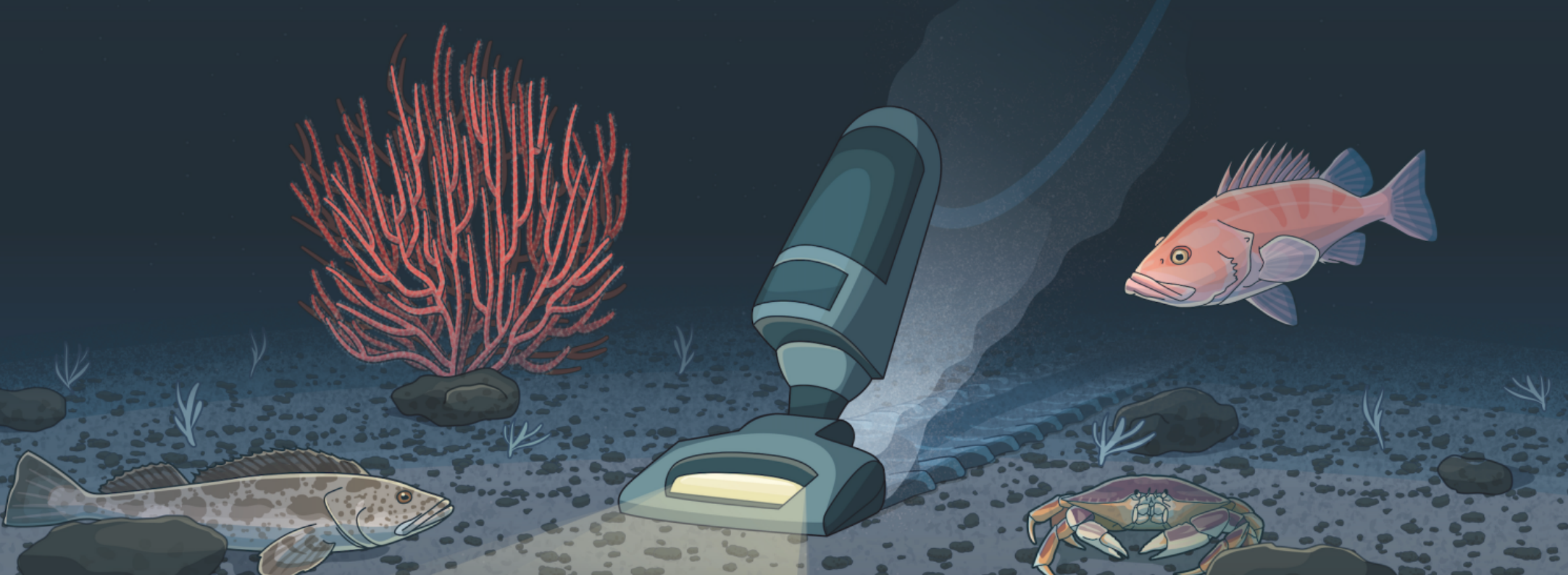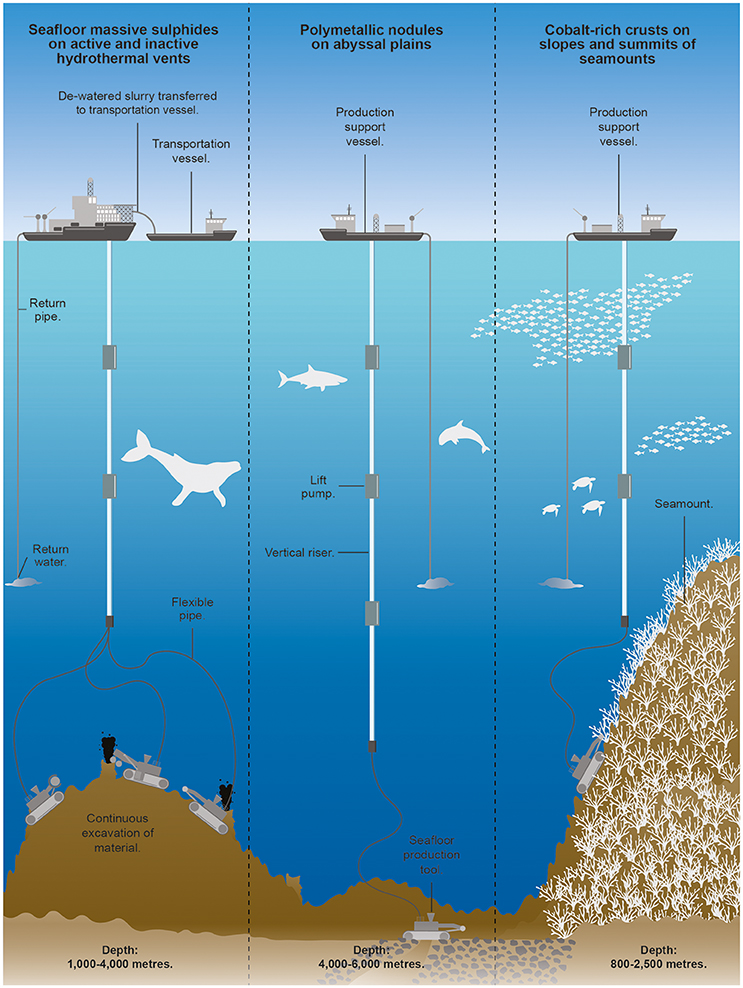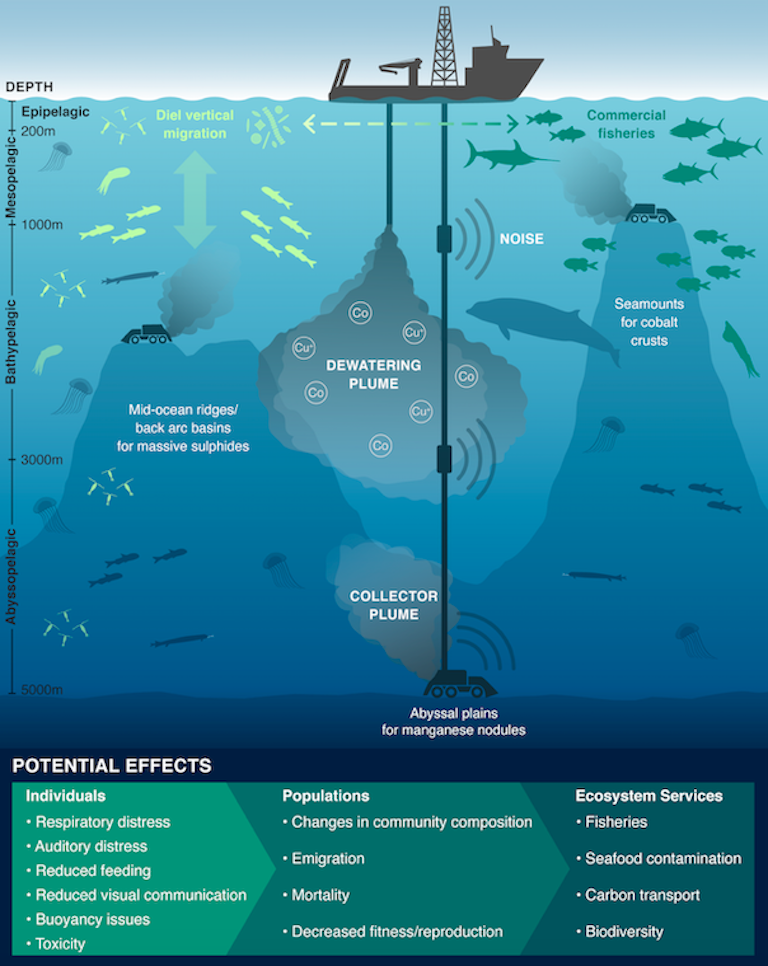
*Above image credit: Pew Charitable Trusts
It seems like every day is another story of environmental disaster - underdog environmentalists fighting uphill battles against powerful extractive industries, organizations struggling to restore injured ecosystems with depleted budgets. It's hard to fight feelings of futility as everywhere we turn we see new and growing threats to our world. Next up on this list of threats: seabed mining.
However, with this new threat comes opportunity. Here in Washington, we have a chance to prevent a disaster before it happens. Our state currently has no specific regulations on seabed mining, and that needs to change. Oregon banned the practice in state waters back in the 1990’s, and there’s no reason we can’t do the same here.
If your business depends on a healthy ocean and Salish Sea, consider adding your name to the growing list of businesses in opposition to seabed mining in Washington waters.
Do you work with an organization that values a healthy marine ecosystem? Add your organization's name to the list of nonprofits speaking out against seabed mining in Washington State.
Call the legislative hotline (1-800-562-6000) and ask your legislators to support SB 5145 to ban seabed mining in Washington's State waters!
What is seabed mining
Seabed mining is the process of extracting minerals and metals from the sea floor. The technology has been around for decades, but until recently it’s been too costly and complex to make it worthwhile. Now, however, increased demand (ironically due to an increase in renewable energy), diminished supply (as land-based sources are depleted), and better technology are making the practice financially feasible.
There are three main sources of minerals that seabed mining will exploit. The first includes collecting manganese nodules from the abyssal plain - think of a big vacuum sucking up softball-sized lumps. These lumps are rich in metals like the nickel and lithium used in the batteries that power our electronic devices. Then there are the massive sulfides that grow around hydrothermal vents which contain precious metals like gold, silver, and copper. Finally, there are metal-rich crusts that form on top of seamounts and contain cobalt, a critical component in electric car batteries. Seamounts are often places of upwelling and high productivity, acting as oases in the open ocean and supporting rich marine life such as whales, sharks, and sea turtles.
Each of these sources requires different technologies that come with distinct environmental, economic, and cultural consequences.

Image credit: Front. Mar. Sci., 10 January 2018 https://doi.org/10.3389/fmars.2017.00418
What are the consequences
There is so much we still don’t know about the deep sea or the effects of mining it. We’ve explored 0.0001% of the seafloor, yet we already know from these brief glimpses that it is incredibly diverse. We also know that life moves slowly in these cold, dark, quiet places, meaning these ecosystems are fragile and vulnerable to disturbances.
What we do know is that seabed mining has immediate and devastating effects on the areas that are mined, so the damage we cause will be irreversible. Bulldozing seamount crusts and toppling massive sulfide towers are clearly destructive practices. Even the seemingly benign act of plucking up the nodules that rest on the abyssal plain is destructive, removing the only hard substrate available for the creatures that need structure to survive.
We also know that mining creates sediment plumes, both locally at extraction sites and higher in the water column as unused sediments or tailings are pumped back into the sea. We know these sediments can bury nearby benthic (seafloor) ecosystems, creating lasting damage. What we don’t know is how far those plumes might drift on ocean currents, and what effects they’ll have on pelagic (open water) ecosystems or our coasts. If a metal-laced sediment plume were to drift into Willapa Bay, what effect would it have on our shellfish industry?
We know mining operations contribute to underwater noise pollution that can interfere with how species like orcas communicate and hunt. The equipment also creates light pollution in a place that evolved in total darkness.
We don’t fully understand what role these ecosystems play in global processes like carbon sequestration. Microbes are the master mediators of the marine environment, controlling how carbon is cycled on a global scale through largely unknown processes. For example, just two years ago scientists discovered a deep sea species of bacteria that can absorb CO₂ and convert it into biomass.
Environmental degradation inevitably brings economic and social consequences. Disrupting marine ecosystems impacts fisheries and the economies and cultures that depend on them. Here in Washington, we have a robust coastal recreation industry that seabed mining could jeopardize as well.
Finally, we know that these deep sea ecosystems are the last unexplored frontier on Earth, containing vast numbers of as-yet undiscovered species with untold benefits to mankind. History is fraught with hard-earned lessons on the dangers of destroying that which we do not understand. In the words of Aldo Leopold, “To keep every cog and wheel is the first precaution of intelligent tinkering.”
Seabed mining has the potential to destroy and alter vast areas of our ocean before we even know what we’re losing.

Image credit: Drazen, et al. (2020).
What can we do?
Most of the world’s deep sea resources are in international waters and are managed by the International Seabed Authority, with complex and incomplete regulations. There is a clear need for the international community to proceed with extreme caution given the potential for long term and far reaching consequences of seabed mining.
But what can we do here in Washington? One thing each and every one of us can do is consume less - buying fewer items decreases demand and buys us more time. Fixing something when it breaks instead of replacing it will increase the lifespan of these products (unsure of how to fix something? look for a local repair fair or fix-it fair).
Industry representatives claim that mining the deep is necessary to meet the growing demand for electronics and green technologies. Others argue that redesigning products so that they use less of these materials, finding alternative sources for them, and implementing a circular economy that is capable of recycling these materials will be enough (unlike plastics, metals are infinitely recyclable).
Setting the stage for increased ocean protections
Seabed mining is a complex issue full of unknowns and international decisions are largely out of our control. But that doesn’t mean we are powerless. Andrew Thaler, a deep sea ecologist that has studied these ecosystems for years, had this to say:
“Unlike any other extractive industry in pretty much human history, this is really the first industry where science and environmentalism have had a 50-year head start.”
It’s not every day that those of us working in conservation have an opportunity to prevent environmental problems before they happen, but that’s what we have here in Washington. Banning seabed mining in our state waters (which extend three miles from shore) is an important first step that sets a precedent and demonstrates our commitment to ocean protection.
Surfrider Washington is circulating a sign-on letter for coastal businesses to show their opposition to seabed mining in our waters. If your business depends on a healthy ocean and robust coastal communities, consider adding your name to the list.
To sign on, please take 1 minute to fill out this form. We will send updates on how the fight for our ocean is going.
Download the One Pager on SB 5145 for more info on our SB 5145 bill to ban seabed mining in Washington's state waters:
For more information:
- Surfrider’s National coastal blog post - Seabed Mining: The Next Threat to Our Ocean
- An Overview of Seabed Mining Including the Current State of Development, Environmental Impacts, and Knowledge Gaps
- Surfrider’s Beachapedia page on seabed mining
- GreenPeace: Is Deep Sea Mining Worth the Risk? infographic
- For updates on international seabed mining, sign up for the Deep Sea Observer's monthly newsletter
Curious to see what it's like down there?
NOAA has been conducting deep water expeditions using ROVs (Remote Operated Vehicles) to observe and study deep sea ecosystems. Just this past week, they've been exploring our very own Quinault Canyon, a deep trench located in our Olympic Coast National Marine Sanctuary. You can read more about what they discovered and peruse additional deep see educational materials.
